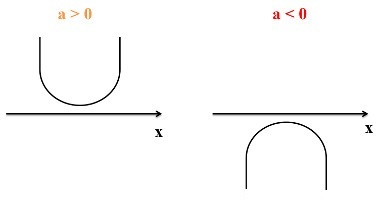Work with composite functions it doesn't have big secrets, but it requires a lot of attention and care. When we deal with a composition of three or more functions, whether they are from the 1st degree or from 2nd degree, greater should be the concern. Before looking at some examples, let's understand the central idea of role composition.
Imagine that you intend to take a plane trip from Rio Grande do Sul to Amazonas. An airline offers a direct flight ticket and another cheaper option, with three air stopovers, as shown in the following diagram:
Rio Grande do Sul → São Paulo → Goiás → Amazonas
Any of the travel options will lead to the intended destination, and so does the composite function. See the image below:

Example of how a composition of three functions works
How about we use this scheme to apply an example? Then consider the following functions: f (x) = x + 1, g (x) = 2x – 3 and h (x) = x². the composition f o g o h (reads: f compound with g compound with h) can be more easily interpreted when expressed as
f(g(h(x))). To solve this composition of functions, we must start with the innermost composite function or the last composition, so g(h(x)). In function g (x) = 2x – 3, wherever there is x, we will replace with h(x):g (x) = 2x – 3
g(h(x)) = 2.h(x) – 3
g(h(x)) = 2.(x²) – 3
g (h(x)) = 2.x² - 3
Now we will do the last composition f(g(h(x))). In function f (x) = x + 1, wherever there is x, we will replace with g (h(x)) = 2.x² - 3:
f (x) = x + 1
f(g(h(x))) = (2.x² - 3) + 1
f(g(h(x))) = 2.x² - 3 + 1
f (g(h (x))) = 2.x² - 2
Let's look at an example to prove that, as happened in the case of the flight mentioned at the beginning of this article, if we choose a value to apply in f(g(h(x))), we will obtain the same result as when applying separately in the compositions. if x = 1, We have to h (1) it's the same as:
Do not stop now... There's more after the advertising ;)
h (x) = x²
h (1) = 1²
h (1) = 1
Knowing that h (1) = 1, let's now find the value of g(h(1)):
g (x) = 2x – 3
g (h(1)) = 2.h (1) - 3
g (h(1)) = 2.1 - 3
g (h(1)) = – 1
Finally, let's calculate the value of f(g(h(1))), knowing that g (h(1)) = – 1:
f (x) = x + 1
f(g(h(1))) = g(h(1)) + 1
f (g(h (1))) = – 1 + 1
f (g(h (1))) = 0
We found that f (g(h (1))) = 0. So, let's see if we get the same result when replacing x = 1 in the formula for the composition of functions we found earlier: f (g(h (x))) = 2.x² - 2:
f (g(h (x))) = 2.x² - 2
f (g(h (1))) = 2.(1)² – 2
f (g(h (1))) = 2 - 2
f (g(h (1))) = 0
So we actually got the same result as we wanted to demonstrate. Let's look at yet another example of composition of three or more functions:
Let the functions be: f (x) = x² - 2x, g (x) = – 2 + 3x, h (x) = 5x³ and i (x) = - x, determine the law of the composite function f(g(h(i(x)))).
We'll start solving this composition by the innermost composite function, h(x)):
i (x) = – x and h (x) = 5x³
h (x) = 5x³
H(i(x)) = 5.[i(x)]³
H(i(x)) = 5.[– x]³
h (i(x)) = – 5x³
Let's now solve the composition g(h(i(x))):
h (i(x)) = – 5x³ and g (x) = – 2 + 3x
g (x) = – 2 + 3x
g(h(x))) = – 2 + 3.[h(x))]
g(h(x))) = – 2 + 3.[– 5x³]
g (h(i (x))) = – 2 – 15x³
We can now determine the law of the composite function f(g(h(i(x))))):
g (h(i (x))) = – 2 – 15x³ and f (x) = x² - 2x
f (x) = x² - 2x
f(g(h(i(x)))) = [g (h(i (x)))]² - 2[g(h(i(x)))]
f(g(h(i(x)))) = [– 2 – 15x³]² – 2[– 2 – 15x³]
f(g (h(i (x)))) = 4 - 60x³ + 225x6 + 4 + 30x³
f (g(h(i(x)))) = 225x6 – 30x³ + 8
Therefore, the law of the composite function f(g(h(i(x))))) é f (g(h(i(x)))) = 225x6 – 30x³ + 8
By Amanda Gonçalves
Graduated in Mathematics
Would you like to reference this text in a school or academic work? Look:
RIBEIRO, Amanda Gonçalves. "Composition of three or more functions"; Brazil School. Available in: https://brasilescola.uol.com.br/matematica/tres-ou-mais-funcoes.htm. Accessed on June 28, 2021.
Function, Function characteristic, Superjective function, Injector function, Bijector function, Image of a function, Image, image of a function, against domain, Counter domain of a function.



